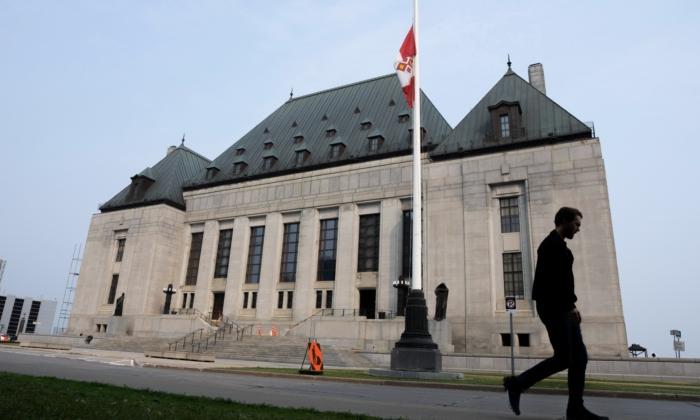OTTAWA—Canada could see the end of the first wave of the COVID-19 epidemic before autumn, according to federal projections, but only if strong physical distancing measures are strictly maintained the whole time.
Even in that best-case scenario, the federal public health agency projects that 4,400 to 44,000 Canadians could die of COVID-19 in the coming months.
If those containment measures are relaxed or abandoned, the death toll could be much, much higher, the agency says.
“These stark numbers tell us that we must do everything that we can now to stay in that best-case scenario,” said chief public health officer Dr. Theresa Tam, in releasing the national projections Thursday morning in Ottawa.
Canada can’t prevent every death, but it must prevent every death that it can, she said.
The agency released modelling data with different scenarios, warning that what happens depends very much on how Canadians behave to keep the respiratory illness from spreading.
“Models are not a crystal ball and cannot predict what will happen,” said Tam.
The Public Health Agency of Canada says short-term estimates are more reliable, and it anticipates 500 to 700 total deaths in Canada by the end of next week.
The model for the best-case scenario suggests between 1 and 10 percent of the population will be infected, and the epidemic will peak nationally sometime between late spring and early summer.
Public health officials don’t yet know if Canada is trending toward that best-case scenario yet, but Tam said the country stands a good chance of falling into that zone.
It won’t be clear we have reached the peak until after it has happened, because of the delayed onset of symptoms. Even after that peak, aggressive physical distancing measures would need to stay in place until the wave recedes completely.
“If we let up, new waves of transmission will take off in our high-risk susceptible population and the epidemic will re-ignite,” Tam said.
The model is based on an aggregate of provincial figures and projections, and Tam said the pandemic will play out differently in different parts of the country.
As for what comes next, Tam suggested that will also vary from region to region. Canada will eventually begin to carefully lift the strict measures that are in place now, but they may have to be put back in place as new outbreaks flare.
“All I can say is that it will be a very cautious approach,” Tam said.
The timing will depend on how well Canadians abide by physical distancing measures and other public health advice in the meantime.
“Everything we do now will shorten that period of time,” she said.
Increasing provincial testing capabilities will also be vital to detect and stamp out new chains of transmission as they appear, Tam said.
Testing rates vary from province to province, and some cases of the virus may be undetected. The general population will need to be tested to make sure any new flare-ups are caught.
Right now, authorities across the country are discussing how effective the current measures have been, what the negative consequences are and how best to lift them, she said.
Tam said Canada has the benefit of being at an earlier stage of the epidemic compared to other countries, and can learn from their experiences when it comes to lifting extreme isolation measures.
Already, Canada’s curve appears to be bending in the right direction, but Tam warned that could change at any time if any part of the country lets up on its strict containment measures.
The real-time data will be monitored daily by public health officials to measure how effective Canada’s response is, and how best to improve it.
By Laura Osman





